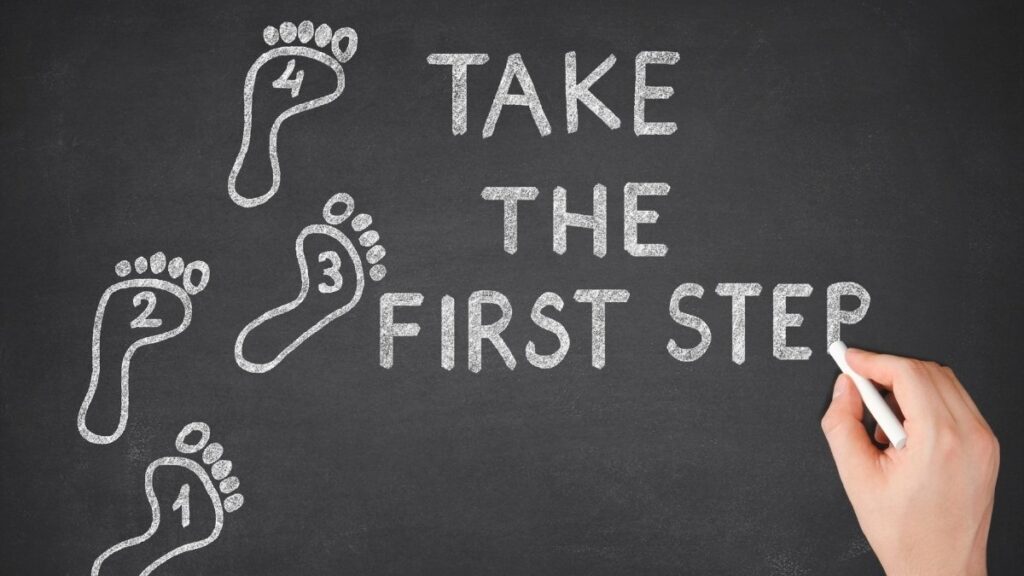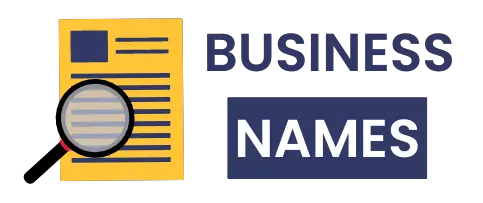“It’s a b—-, but you gotta do it,” legendary investor Charlie Munger said about your first $100,000. If you’re struggling with this financial milestone, you’re not alone—the first 100k hardest for mathematical reasons.
The typical American household holds just $8,000 in savings, with only 46% having emergency funds. Employed Americans report saving 23% of income, yet nearly a quarter aren’t tracking accurately.
This guide reveals why your first $100K takes 31.8% of total time reaching $1 million, psychological barriers making wealth building impossible, proven strategies using 2025’s tools, and how compound interest creates a “wealth snowball effect” after this threshold.
Why Your First $100K Is the Hardest Money You’ll Ever Save (And How to Get There Faster in 2025)
You check your savings account again. The number hasn’t magically grown since yesterday. You’re doing everything right – cutting coffee, skipping dinners out, even driving your old car for another year. But your money grows so slowly it feels pointless.

Here’s the truth: saving your first $100K is brutal. It takes most people over 10 years. But once you hit that magic number, everything changes. Your money starts working harder than you do.
Let’s break down why this happens and how you can speed it up.
The Brutal Math: Why Your First $100K Takes Forever
The numbers don’t lie. They’re just depressing.
If you save $500 every month with 8% returns, your first $100K takes 10.62 years. That’s nearly 32% of the total time needed to reach $1 million. The math feels broken, but it’s not.

Here’s what’s really happening. When you start with nothing, compound interest has nothing to work with. You save $6,000 in your first year. Even with great 7% returns, you only earn $420 in interest. That’s $35 per month. You can find more money than that in your couch cushions.
After five years of saving $6,000 annually, you’ll have $34,504. Sounds good until you realize $30,000 came from your own pocket. Interest only contributed $4,504. You’re basically paying yourself to save.
But watch what happens next. After 10 years, you’ll have $82,898. Your contributions total $60,000, but interest kicks in $22,898. The compound interest wealth building finally starts working.
The acceleration gets crazy after $100K. From $100K to $200K takes only 9 years. Then $200K to $300K takes 5 years and 3 months. The next $100K? Just 3 years and 9 months.
Think about it this way. $1,000 earning 7% annually gives you $70. But $100,000 earning 7% gives you $7,000. Same rate, different results. Once your money hits six figures, it starts earning more than many people’s emergency funds.
This wealth accumulation curve explains why rich people seem to get richer without trying. They’re not necessarily smarter. Their money just crossed the magic threshold where compound interest does the heavy lifting.
The first 100k timeline feels endless because contributions matter more than returns early on. You’re essentially building the foundation. It’s not glamorous, but it’s necessary.
The Psychology Behind the Struggle (And How to Beat It)
Your brain works against you when building wealth. That’s not your fault – it’s biology.

Tori Dunlap, founder of Her First 100k, points out something important: “Women wait to start investing compared to men because they’re nervous about making a mistake.” This costs serious money over time. But the fear isn’t gender-specific. Most people are terrified of losing money they worked hard to save.
This creates a scarcity mindset. You keep money in savings accounts earning 0.61% because it feels safe. Meanwhile, inflation eats your buying power alive. You’re losing money by trying not to lose money.
The real problem runs deeper. When you have $5,000 saved, losing $500 feels devastating. It’s 10% of everything you own. But when you have $100,000, losing $500 feels like pocket change. Same dollar amount, completely different emotional impact.
Scientists call this “financial self-efficacy.” Your belief in your ability to manage money grows dramatically once you’ve proven you can do it. Hitting $100K creates a psychological shift from survival mode to growth mode.
Remember the Stanford Marshmallow Experiment? Kids who could delay gratification for a second marshmallow had better life outcomes decades later. This included greater financial stability. The ability to wait for bigger rewards literally predicts wealth building success.
But here’s the good news. You can train this skill. Start viewing financial setbacks as temporary and educational rather than permanent failures. That’s a growth mindset in action.
When your investment account drops 10% (and it will), remind yourself: “This is normal market behavior. I’m learning how markets work. I’ll keep investing and wait for recovery.” People with this mindset build more wealth over time.
Fixed mindset says: “I’m bad with money. This proves I shouldn’t invest.” Growth mindset says: “I’m learning about money. This experience teaches me about market cycles.”
The confidence transformation happens gradually. Each successful month of saving builds on the last. Each market recovery proves your strategy works. By the time you hit $50K, you’ll think differently about money entirely.
Current Savings Reality in 2025: Where You Stand
Let’s talk about where most people actually are with money. The picture might surprise you.

The U.S. personal savings rate sits at 4.4% as of July 2025. But survey data shows employed Americans save 23% on average. Someone’s not telling the truth. Most people aren’t tracking their spending accurately.
Emergency funds tell a brutal story. 37% of U.S. adults used emergency savings in the last 12 months. Even worse, 80% used it for monthly bills and unplanned expenses. That’s not an emergency – that’s a budgeting problem.
Generational differences reveal interesting patterns. Millennials saved the most in 2024 with $9,299 average. Gen Z managed $6,000+. Gen X saved $5,132, and baby boomers saved $4,000+.
The younger generations are saving more despite earning less and facing higher costs. They learned from watching older relatives struggle in 2008 and 2020.
Here’s the scary part: 33% of Americans have more credit card debt than emergency savings. That’s down from 36% in 2024, but still terrible. These people are moving backwards financially every month.
But there’s good news. High-yield savings accounts now offer up to 4% APY. That’s massive compared to the national average of 0.61%. If you’re earning less than 4% on your savings, you’re leaving money on the table.
The 2025 savings statistics show a clear divide. People either get money management or they don’t. There’s not much middle ground. Those who track spending and automate savings pull ahead quickly. Those who don’t stay stuck.
Regional variations matter too. Coastal cities see higher savings amounts but also higher costs. Midwest savers often have lower amounts but greater buying power.
The emergency fund data reveals the real problem. Most people treat symptoms instead of causes. They save for emergencies instead of budgeting properly to prevent them.
Proven Strategies to Accelerate Your First $100K in 2025
Ready to speed things up? These strategies actually work because real people use them successfully.

Boost Your Income Fast
Statistics show 1 in 3 Americans have side hustles. 40% rely on them for essential expenses. This isn’t just extra money – it’s survival income for many people.
Digital products offer the best return on time invested. Create an online course once and sell it repeatedly. People earn $500 to $5,000+ monthly this way. The upfront effort is medium, but the ongoing income requires minimal work.
Photography side hustles can generate $10,000 in the first year. Wedding photographers charge $1,000 to $3,000 per event. Even portrait sessions bring $200 to $500 each. If you own a decent camera, this beats most part-time jobs.
Online course creation earns $1,000 to $10,000+ monthly for many creators. Teach something you already know. Digital marketing, cooking, fitness, crafting – people pay to learn practical skills.
Affiliate marketing through social media platforms requires no upfront costs. Promote products you actually use. Your followers trust your recommendations. Some people earn $500 to $5,000+ monthly this way.
Cut Expenses That Actually Matter
Americans spend an average $219 monthly on subscriptions. Most people can’t name half of them. Cancel everything you haven’t used in 30 days. That’s $2,628 annually – enough to fund a Roth IRA.
Negotiate your bills using competitor offers. Call your internet, phone, and insurance companies annually. Say “I got a better offer from [competitor]. Can you match it?” Many companies have retention departments authorized to cut your bill 20% to 40%.
Transportation costs kill budgets. If you live in a city, calculate car ownership costs: payment, insurance, gas, parking, maintenance. Many people save $500+ monthly using rideshares and public transit instead.
Housing optimization means different things for different people. Rent out a spare room. Move to a cheaper area. Refinance your mortgage. Even a $200 monthly reduction adds $2,400 annually to your savings.
Automate Everything

Use budgeting apps like Simplifi by Quicken or Empower for automatic tracking. These connect to your accounts and categorize spending automatically. No manual entry required.
Pay yourself first methodology works because it treats savings like a bill. Set up automated transfers right after paychecks hit your account. If you never see the money, you won’t miss it.
Dollar-cost averaging strategies remove emotion from investing. Buy the same dollar amount of index funds every month regardless of market conditions. This automatically buys more shares when prices are low and fewer when prices are high.
Strategic Investment Approaches
Tax-advantaged accounts like 401(k)s and IRAs can generate 25% to 40% more wealth over time. The tax savings compound just like your investments. Maximize these before using taxable accounts.
The Rule of 72 shows money doubles every 7.2 years at 10% returns. This explains why starting early matters so much. Money invested at 25 has 40+ years to double multiple times. Money invested at 45 only has 20 years.
Real estate crowdfunding and fractional investing let you buy property with $500 instead of $50,000. Platforms like Fundrise and RealtyMogul offer this access to regular investors.
Create a Month-by-Month Plan
To save 100k strategies that work, you need specific monthly targets. Saving $100K in 5 years requires $1,667 monthly assuming 7% returns. That’s $20,000 annually.

Break this down further. If you earn $75,000 gross annually, that’s roughly $55,000 after taxes. Saving $20,000 means living on $35,000. That’s tight but doable with the right expense cuts and income boosts.
Month 1: Track all spending. Set up high-yield savings account. Automate $1,000 monthly transfer.
Month 2: Start one side hustle income stream. Cut subscription services. Negotiate one major bill.
Month 3: Open investment account. Begin dollar-cost averaging $500 monthly into index funds.
Month 4: Increase side income target to $500 monthly. Review and optimize all spending categories.
Continue this pattern, increasing saves and investments as income grows. The automated investing ensures you don’t have to make daily decisions about money.
The Tools and Resources That Actually Work in 2025
The right tools make wealth building automatic. Here are the ones successful savers actually use.
Budgeting Platforms That Connect Everything

Quicken Simplifi connects all your accounts automatically. It creates spending plans based on actual income and expenses, not unrealistic budget categories. The app costs $47.88 annually but saves most people $500+ by catching overlooked expenses.
Empower (formerly Personal Capital) offers free account aggregation and investment tracking. The paid wealth management services cost money, but the basic tools are excellent for tracking net worth growth.
YNAB (You Need A Budget) uses zero-based budgeting. Every dollar gets assigned a job before you spend it. Users typically find $200 to $600 extra monthly in their first year.
High-Yield Savings That Actually Pay You
Best accounts offering 4%+ APY vs. the national average of 0.61% include Marcus by Goldman Sachs, Ally Bank, and Capital One 360. These have no minimum balances and no monthly fees.

CIT Bank and American Express Personal Savings often lead rates. They’re FDIC insured just like big banks but pay 6x to 8x more interest.
Credit unions frequently offer better rates than banks. Navy Federal and PenFed are open to most people and consistently offer top rates.
Investment Platforms That Make It Simple
Fidelity and Schwab offer commission-free stock trades and low-cost index funds. Their target-date funds automatically adjust allocation as you age.
Vanguard pioneered low-cost index investing. Their Total Stock Market Index has an expense ratio of just 0.03%. That means $3 annually per $10,000 invested.
Robo-advisors like Betterment and Wealthfront automate everything. They rebalance portfolios, harvest tax losses, and adjust allocation automatically. Management fees run 0.25% to 0.50% annually.
Income Tracking for Side Hustles
QuickBooks Self-Employed tracks business income and expenses automatically. It connects to bank accounts and credit cards to categorize transactions. This makes tax time much easier.

FreshBooks works well for service-based side hustles. Track time, send invoices, and accept payments all in one platform.
Even a simple spreadsheet works for basic tracking. Create columns for date, income source, amount, and expenses. Update it weekly to stay organized.
Educational Resources That Actually Teach
“The Simple Path to Wealth” by JL Collins explains index fund investing in plain English. No complex strategies or get-rich-quick schemes.
“I Will Teach You to Be Rich” by Ramit Sethi covers the psychology of money management. The automation strategies alone are worth the book price.
Best budgeting apps 2025 lists change frequently, but the core principles remain the same. Automate everything possible, track what matters, and keep it simple.
The Bogleheads forum and subreddit offer free advice from experienced investors. These communities focus on low-cost, long-term strategies that actually work.
What Changes After You Hit $100K (The Wealth Snowball Effect)
Everything transforms once you cross $100K. The math becomes magic.
Your $100K earning 7% generates $7,000 annually. That’s more than many people save through budgeting alone. Your money starts working harder than most side hustles.
The psychological transformation hits harder than the mathematical one. Crossing $100K creates genuine financial security. You shift from survival thinking to growth thinking. Market downturns become buying opportunities instead of panic attacks.
Strategic patience becomes possible with substantial assets. When the market drops 20%, you can “buy the dip” instead of selling in fear. This advantage compounds over decades.
Career flexibility opens up dramatically. You can take calculated risks like starting a business or changing fields. The wealth snowball effect provides a safety net that enables bigger moves.
Your decision-making improves across all areas. When you’re not worried about money, you make better choices about everything else. You’ll negotiate harder, take on bigger challenges, and think longer-term.
The compound interest acceleration becomes visible in your monthly statements. Investment returns begin outpacing contributions. This creates true passive income that grows without additional work.
Most people hit their stride around $150K to $200K. By then, market returns generate $10,000 to $15,000 annually. That’s a part-time job’s worth of income from money sitting in index funds.
The wealth snowball effect explains why millionaires often seem relaxed about money. They’re not necessarily earning more from jobs. Their assets generate substantial passive income that compounds automatically.
Financial security milestone achievement changes your relationship with risk. You’ll start companies, invest in real estate, and make moves that seemed impossible when you had $10,000 saved.
The timeline from $100K to $1 million averages 15 to 20 years with consistent investing. That’s less time than it took to save the first $100K. Compound interest finally works in your favor instead of against you.
Your Next Move Starts Today
The first $100K is mathematically the hardest because compound interest hasn’t kicked in yet. But you’re not stuck with slow progress forever.
Success requires the right mindset. You have to decide you’re ready to start saving regardless of what’s happening in your life. There will always be reasons to wait. Don’t wait.
2025 offers tools and opportunities that didn’t exist even five years ago. High-yield savings accounts pay real interest. Side hustle options multiply daily. Investment platforms make everything automatic.
The psychological and mathematical advantages compound after $100K. Your money starts working harder than you do. Your confidence grows with your account balance. Both effects accelerate wealth building dramatically.
Calculate your specific timeline using your current savings rate. If you’re saving $1,000 monthly with 7% returns, you’ll hit $100K in 7.3 years. Want to cut that to 5 years? You need to save $1,550 monthly.
Implement one income-boosting strategy this month. Start a side hustle, negotiate a raise, or sell services online. An extra $500 monthly cuts years off your timeline.
Automate your savings and investment systems this week. Set up transfers that happen without your input. Remove the daily decisions that derail progress.
Track progress monthly to maintain motivation. Watching your net worth grow creates positive momentum. Celebrate small wins while working toward bigger goals.
Remember, the first 100k is the hardest, but with the right strategies and mindset, you can accelerate your compound interest wealth building and make every subsequent milestone easier.
Your future wealthy self is counting on the decisions you make today. Start now.

